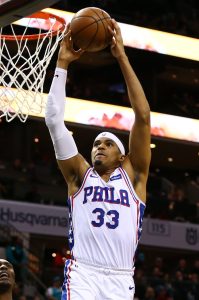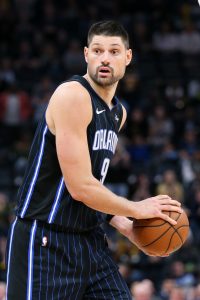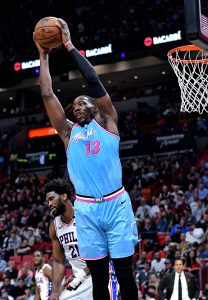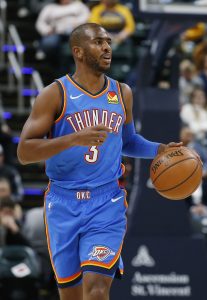Following the NBA’s salary cap spike four years ago, just eight of 53 veterans who held player options on their contracts in 2016 and 2017 actually exercised those options — the other 45 opted out in search of a larger and/or longer-term deal.
However, the pendulum has swung back in the other direction over the last couple years. Of the 55 vets who held player options in 2018 and 2019, just 20 opted out, with the rest choosing security and putting off their free agency by a year.
Due to the coronavirus pandemic, 2020 may represent one of the most extreme years in recent memory in terms of option decisions. Even with the NBA’s salary cap projected to increase to $115MM, less than one third of the league’s teams was expected to open up cap room. If the cap instead stays level – or declines – those teams will have even less flexibility. Suddenly, those option years may look a whole lot more appealing to players than trying to secure a big payday on the open market.
ESPN cap guru Bobby Marks recently predicted to Marc Berman of The New York Post that all 29 players with options for 2020/21 will pick them up. Keith Smith of Yahoo Sports conveyed a similar sentiment this morning, tweeting that he expects at least 27 of those players to opt in.
Are those predictions realistic? Let’s take a closer look at the NBA’s player options for 2020/21, dividing them up into four separate categories…
Group 1: The options that look too good to pass up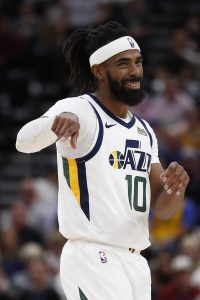
- Nicolas Batum (Hornets) — $27,130,434
- Mike Conley (Jazz) — $34,502,132
- Note: This is technically an early termination option.
- Rodney Hood (Trail Blazers) — $6,003,900
- James Johnson (Timberwolves) — $16,047,100
- Stanley Johnson (Raptors) — $3,804,150
- Kelly Olynyk (Heat) — $13,598,243
- Jabari Parker (Kings) — $6,500,000
- Otto Porter (Bulls) — $28,489,239
- Tony Snell (Pistons) — $12,178,571
In all likelihood, these players would have opted in for 2020/21 regardless of whether or not the NBA’s revenue streams were disrupted. In each of these cases, the player’s option salary outweighs his likely value on the open market, either due to performance or injury. They look like safe bets to exercise their options for next season.
Group 2: The minimum-salary options
- James Ennis (Magic) — $2,130,023
- Mario Hezonja (Trail Blazers) — $1,977,011
- Wesley Matthews (Bucks) — $2,692,991
- Mike Muscala (Thunder) — $2,283,034
- Austin Rivers (Rockets) — $2,436,046
- Rajon Rondo (Lakers) — $2,692,991
Players with minimum-salary options often turn them down even if they’re not sure they can get more than the minimum on their next deal, since there’s little downside. However, if the cap doesn’t increase, these players would be better off with their option salaries, which will be more lucrative than the minimum salary on a new contract. Rondo, for example, would make $2,564,753 next season if he opts out and signs a new minimum deal, if the cap stays at the same level.
In other words, the only way it would make sense for anyone in this group to opt out is if he felt confident in his chances of getting an offer above the minimum as a free agent. Maybe that’ll be the case for a solid rotation player like Matthews or Rivers, but it wouldn’t be a shock if all six of these guys opt in.
Group 3: It may not be worth rolling the dice in free agency
- Avery Bradley (Lakers) — $5,005,350
- Willie Cauley-Stein (Mavericks) — $2,286,357
- Kentavious Caldwell-Pope (Lakers) — $8,493,746
- Andre Drummond (Cavaliers) — $28,751,774
- Evan Fournier (Magic) — $17,150,000
- JaMychal Green (Clippers) — $5,005,350
- Tim Hardaway Jr. (Mavericks) — $18,975,000
- Gordon Hayward (Celtics) — $34,187,085
- Enes Kanter (Celtics) — $5,005,350
- Robin Lopez (Bucks) — $5,005,350
- JaVale McGee (Lakers) — $4,200,000
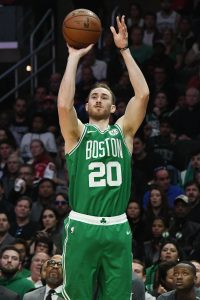 In a typical year, many of these players would likely think long and hard about opting out — even if they weren’t sure whether they’d be able to top their 2020/21 salaries in free agency, there would be a good chance of earning more overall money by signing a new, longer-term deal. For instance, Hayward won’t get any offers with a starting salary of $34MM, but a three- or four-year deal with a lesser annual salary could have been a win-win for him and the Celtics.
In a typical year, many of these players would likely think long and hard about opting out — even if they weren’t sure whether they’d be able to top their 2020/21 salaries in free agency, there would be a good chance of earning more overall money by signing a new, longer-term deal. For instance, Hayward won’t get any offers with a starting salary of $34MM, but a three- or four-year deal with a lesser annual salary could have been a win-win for him and the Celtics.
With the cap in flux though, these 11 players may be better off picking up their options and trying their luck on the 2021 free agent market. That’s especially true if they’re seeking an offer greater than the mid-level, like Drummond, Fournier, Hardaway, and Hayward would be. There just won’t be that many teams with both the desire and the necessary cap room to spend big on veteran free agents.
I wouldn’t consider most of these players locks to opt in, but I think they’re probably more likely than not to do so.
Group 4: Potential wild cards
Unless the salary cap really plummets, it still makes sense for Davis to opt out. The cap would have to dip below $96MM for his option salary to be worth more than the 30% max he’d earn as a free agent. Still, it seems unlikely that he’ll ink a long-term contract this offseason. A one-year guarantee with a second-year player option is probably his best bet for maximizing his earnings going forward.
DeRozan was the second player identified by Keith Smith as a candidate to opt out since it’s unclear whether or not he’s happy in San Antonio. A March report indicated the Spurs guard isn’t thrilled with his current situation, while another suggested he plans to opt out if he doesn’t receive a contract extension.
Those reports both came the week the NBA season was suspended, so even if they were accurate, it’s possible DeRozan’s mindset has changed over the last couple months. If not for the rumors about his potential dissatisfaction, I’d place him in Group 3 and assume he’d be opting in.
As for Grant, it’s possible he’ll play it safe and pick up his option, but even given a cap crunch, I don’t think there will be a shortage of teams willing to do a longer-term with a slightly higher average annual value than his $9.3MM option. If he opts in, he’d probably do so banking on the idea of getting more lucrative multiyear offers in 2021.
Photos courtesy of USA Today Sports Images.
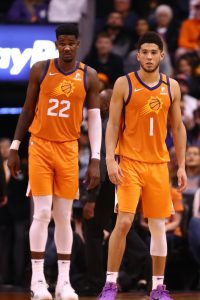

 In a typical year, many of these players would likely think long and hard about opting out — even if they weren’t sure whether they’d be able to top their 2020/21 salaries in free agency, there would be a good chance of earning more overall money by signing a new, longer-term deal. For instance, Hayward won’t get any offers with a starting salary of $34MM, but a three- or four-year deal with a lesser annual salary could have been a win-win for him and the Celtics.
In a typical year, many of these players would likely think long and hard about opting out — even if they weren’t sure whether they’d be able to top their 2020/21 salaries in free agency, there would be a good chance of earning more overall money by signing a new, longer-term deal. For instance, Hayward won’t get any offers with a starting salary of $34MM, but a three- or four-year deal with a lesser annual salary could have been a win-win for him and the Celtics.